NOTE: this is reprinted from an article posted on my old blog, with no edits, just in case you have a desire to read comics from 2013. For the best reissues of 2013, go here.
I worked on several versions of this. First, I separated out the Marvel books from everyone else because I read way too much Marvel and because comparing, say, Superior Spider-Man to something as offbeat as Saga is really an apples to oranges comparison. But then I thought: Why shouldn’t Marvel swim in the same pool? And why should Marvel’s heavily corporate approach to characterization be considered artistically inferior to indie series that tend to develop organically and/or neo-realistically? Commercial art is as valid as groundbreaking art—and the lines between these are becoming increasingly blurred as Saga and Paul Pope’s Battling Boy regularly sell out on the stands.
And also I realized that combining Marvel and non-Marvel would make DC basically nonexistent, as Marvel would get its own list and DC would have to compete with much more interesting indie books. But I couldn’t make a DC-only best of list because there isn’t one. This year, DC took all the potential and good will (and sales) it created with the new 52 and leveled them. There were some close-to-great DC books this year, but both were written by Grant Morrison (Batman, Inc. and Action Comics). But startlingly few were better than mediocre. All Star Western was better than good, but even Wonder Woman, which I still enjoy, failed to make me stand up and say “wow!”
Perhaps most notable about this year’s list: No Walking Dead. That comic has made my list every year since I started comic blogging, but this year Robert Kirkman’s limited ability to write dialog became too distracting, and too obvious, in a drawn-out storyline that involved way, way, WAY too much cursing. It was lazy writing, sacrificing what in the past was strong character-based work to shock value and viciousness. Maybe it crossed over from artistic to corporate…
So, here’s my top 20. But first, a note on the not-top-20:
Notable, but not top 20
A few books are worth mentioning, but the pacing of the stories has been such that I can’t say they’re top 20 material (yet). The first is Jeff Lemire’s Trillium, published by Vertigo, which has been doing a great job playing with the comic book format in terms of page alignment and use of the flip-book concept, but not enough has happened in the actual comic yet to see whether it’s got the goods or just has some very creative gimmicks. Another one is Kinski, created by Gabriel Hardman and published by Monkey Brain. It seems to be about a small-time hood and a lost dog, and the story is unfolding in a very deliberate, moving way…But there just haven’t been enough issues published to see if it’s going somewhere. Still, a great start from this creator-owned book.
And finally, the great Jonathan Luna of the Luna Brothers has a new book that just launched in November, Alex and Ada, which (after one issue) is really great.
And now, the top 20:
20. Liberator (Black Mask)
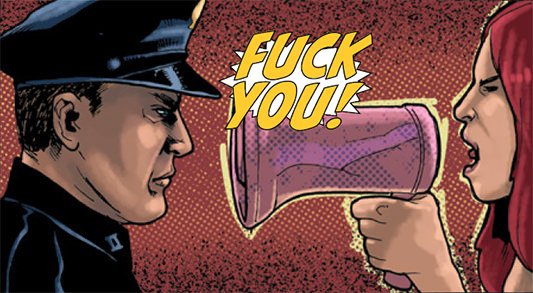
There was a lot wrong with Liberator, a Kickstarter project from Matt Miner (Occupy Comics) and Javier Sanchez Aranda. But it’s much more interesting to talk about what was right with it. It was “about” something—people who perform terrorist acts in support of animal rights—controversial, and it never answered the moral questions that it raised. It really asked more than it answered. I’m sure your own beliefs on animal testing, radical protesting, and factory farming would impact whether you enjoyed this comic, because it pulled no punches, but in the end I didn’t see its portrayal of animal rights terrorists as wholly positive. Sure, they were the focus of the story—but were they truly heroes? It’s unclear. The shortcomings of the book were symptoms of its relatively inexperienced creators, the lack of time to really develop the characters, and the need for a real storyline (it was more of a slice-of-life) and tension. Still, it left me wanting more. In these days of kickstarter and internet publishing, new and unpolished creations are a dime a dozen. This one is the needle in that haystack—the one that’s worth seeking out and reading. I’d like to see what they can do with these characters. Plus, who is telling stories about these issues nowadays? Nobody.

19. 47 Ronin (Dark Horse)
A tale that’s been told many times throughout history in many forms of media, with art by Stan “Usagi Yojimbo” Sakai and a well-researched script by Mike Richardson. The story was a little slow moving, but overall this is a very good, very different kind of comic.
Note: The Keanu Reeves mumblethon movie doesn’t have anything to do with this comic. The comic is based on an ancient Japanese myth. The movie appears to be…Well, I’ll just be kind and say not what the comic is.
18. Dream Thief (Dark Horse)
Extremely original, creepy and cool. I’m not a fan of horror comics, but this story, about a slacker who is possessed by a demonic mask that makes him kill bad guys, neatly crosses the genre boundaries of noir/action/horror. Also, there are lots of stories about guys reluctantly called to duty as a super, but this one really focuses on that dilemma. And the wrinkle is: He’s kind of a tool. The character arc reminds me of one of my favorite movies, The Civilization of Maxwell Bright, in that it focuses not so much on the redemption and atonement of a damaged soul but the reluctant improvement of a douche bag brought on by circumstances beyond said d-bag’s control. Written by Jai Nitz and illustrated by Greg Smallwood.
17. The Black Beetle (Dark Horse)
A pulpy reimagining of the Batman/Shadow-like vigilante from the 1940s that is beautifully rendered (written, designed and drawn) by the great Francesco Francavilla. The script is fine, not great, not terrible, but the character concepts, art and page designs make this book undeniable. This is one of those books you buy for the art, and the story serves as a foundation to let Francavilla do some of the greatest work of his career.
16. The Wake (Vertigo)
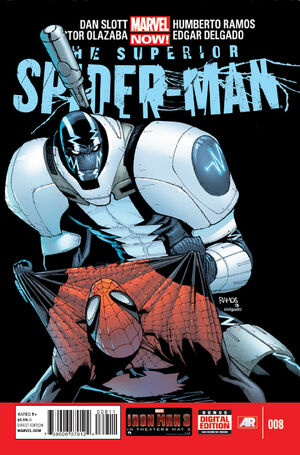
It might be unfair to include this eight-issue mini here, as we’re only about halfway done with it in 2013, but the story is so engaging, so different, and so challenging. It’s not that it’s decompressed so much as it is deep. It’s appropriate that it takes place underwater, because the true motives of the characters and the issues they’re dealing with are submerged, and only gradually being brought to the surface. And the art … Is Sean Phillips. No more need be said.
15. Superior Spider-Man (Marvel)
Unless you’ve been hiding under a rock, you know Otto Octavius is now living out his old age in the young(er) body of Peter Parker. Yes, the premise is dumb. Even dumber than the wonderful Travolta/Cage monument to overacting that is known as Face/Off. It’s dumb even in a world where a radioactive spider can give someone powers.
But it works.
Not only does it work, it’s hilarious. And it challenges all the notions of Spider-Man that came before: If Pete’s so smart, why didn’t HE think of all the stuff Doc Ock is doing? We alI know this narrative body-switch won’t last forever, but while it lasts it’s a great change of pace. I can’t wait to see how Peter puts it all back together.
14. Rachel Rising (Abstract)
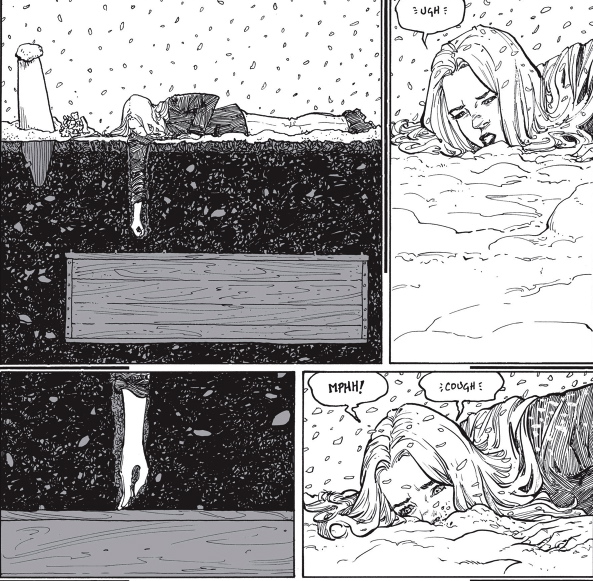
If you’re a regular reader of my blog, you know I’m in love with Terry Moore. He can do no wrong in my book. His first major work, Strangers In Paradise was a long, sprawling love story wrapped in a tale of intrigue and karate. Next came Echo, a neo-realistic look at an Extremis-type Iron Man character, and an extremely thought-provoking piece of science fiction. Now, he’s moved on to horror in one of the most genuinely disturbing and (as always) beautifully drawn comic books of all time. Every page is a wonder—every panel could be framed and put on your wall. And the story is a twisty and completely unpredictable. Even if you don’t like zombies and witches, you should give it a try.
13. Five Weapons (Image)
Jimmie Robinson’s miniseries asks the question: Does anybody remember FUN? This tale of a young assassin in an assassin school was constantly inventive and surprising, twisty and joyous. The final act didn’t hold together very well, but the first four issues were gold and well worth the price of admission. As a bonus, any kid age about 10 and up will adore this book.
12. Young Avengers (Marvel)
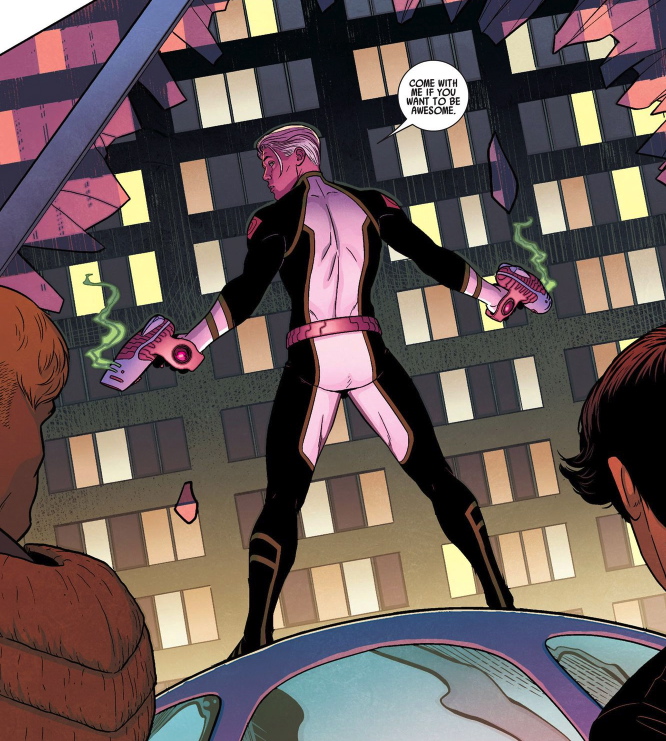
Kieron Gillen is doing some of the best dialog and character work at Marvel, but the real trophy here has to go to Jamie McKelvie, whose innovative layouts and designs continue to push the envelope. He’s offered numbered diagrams of fight scenes, eschewed standard wide screen/six panel pages for slanted, swirling, curved and arced panels that express as much about the characters in them as the dialog itself. One of my favorite examples was having characters who were trapped escape their prison by, literally, crawling out of the panel on the page—yet, because it’s a comic book, they’re still on a page! It’s way beyond literal visual storytelling. It’s something that can only be done in comic books. Movies can’t do that. TV can’t. Books can’t. Just comics.
11. Fury MAX: My War Gone By (Marvel MAX)
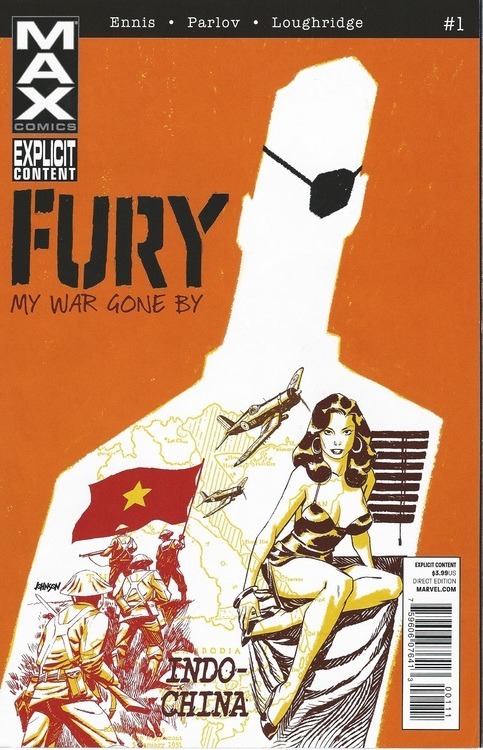
Garth Ennis and Goran Parlov team up again for the first time since their brilliant work on Punisher MAX to tell the non-canon version of Nick Fury’s story. It shows the progression of a warrior from a young idealist to an old, haunted, and broken soldier. Comics about red tape and politics are hard to make, and harder to make interesting, but this one clicked on all levels—right up to the heartbreaking conclusion. If this is the last MAX book Ennis ever does, it’s a fitting end to his work with Marvel. Also: It’s got Barracuda in it. So there’s that.
10. Lazarus (Image)
Selecting the tenth-best book was tough for me. Something about being in the top 10 (versus the top 20) seems important, but several of the books below this one could have cracked the top 10 as well. I went with Greg Rucka and Michael Lark’s Lazarus for two reasons: Not enough people are talking about it (what with so many other brilliant Image Comics to choose from), and Greg Rucka never gets enough credit. The man writes circles around most others in the field, and yet his name is rarely raised in the same discussions as Grant Morrison, Jonathan Hickman, Bryan Vaughn, Brian Bendis…But it should be. Lazarus combines the grit and grime of Rucka’s best Gotham City stories with a look at a bleak future that harkens back to Feudal Europe. It’s genius.
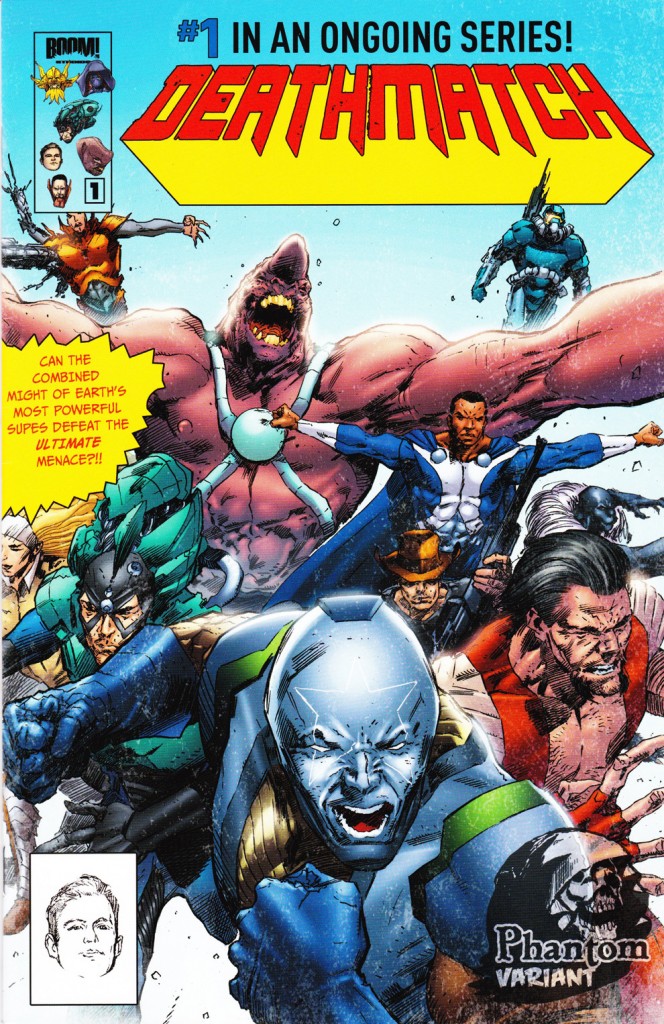
9. Deathmatch (BOOM!)
Paul Jenkins and Carlos Magno have been quietly tearing it up with this book. The concept is pretty much the same as Avengers Arena, Hunger Games, Battle Royale, and many others that have come before: People are stuck in a room and can only get out by killing each other. What distinguishes this book are the characters: All new heroes, all new villains, and most of them are highly original. It’s not like so many “new” superhero universes where you can look at each character and say “he’s the Batman, he’s the Superman, he’s the Flash.” These characters have creative power sets, and even those with abilities that seem familiar also have enough depth to them to feel like innovations. And Jenkins simply drops us into the universe: Rather than run through a bunch of listless origin stories, we the reader have to learn about these characters through the story itself, making every character a mystery within the larger mystery that serves as the center of the story: Why were they taken? How are they being held hostage? Who is behind it? This is a great book with the potential for even greater spin-off titles. I can’t imagine where it’s going, but I hope at least some of the characters will live past this death match.
8. Daredevil: End of Days (Marvel)
Perhaps it’s my affinity for all things Daredevil, but I thought that this extended miniseries, which wrapped in 2013, was an unsung hero of the capes-and-tights genre. Occurring in the (perhaps alternate) future, Daredevil is killed and reporter Ben Urich investigates his death. This is some of the most interesting writing Brian Bendis has done in a long time, and featured amazing art by David Mack, Klaus Janson and the great Bill Sienkiewicz with incredible covers by Alex Maleev. I’m sure it will be collected soon, and I urge even the most causal DD fan to pick it up. Great stuff!
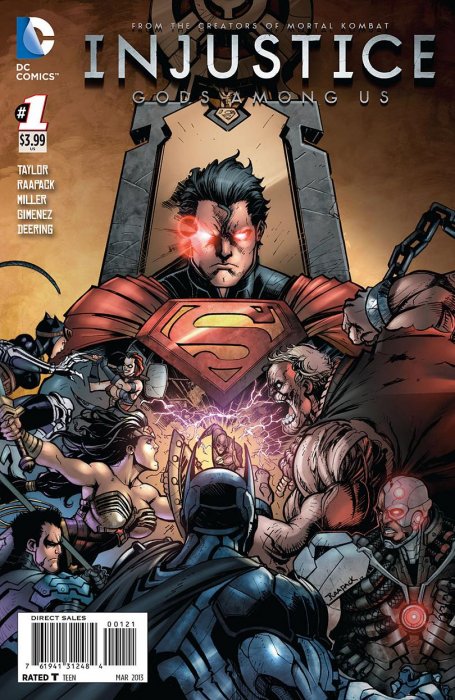
7. Injustice: Gods Among Us (DC Digital First)
The best thing published by DC isn’t published on paper, it’s this unlikely video-game spin-off that turns the DCU on its head. Many have tried to do this before using stand-ins for Superman, Batman, etc., in books like Incorruptible, The Authority, and Supreme Power MAX, but this actually does it with the real characters. And it’s plausible, well-written, and constantly surprising. Tons of fun, great superheroics. When they release it in a bound volume, I’ll totally buy it.
6. Hawkeye (Marvel)
Like Mark Waid and his art team have done on Daredevil (see below), Matt Fraction, David Aja and Javier Pullido have put together a book about a character that can coexist with The Avengers without being contaminated by it, by which I mean that the Clint Barton we see in this title is similar to the one in the “big books” and movies, but the stories are not. It’s an intimate book, and a daring one. I can’t say I thought the “pizza dog” issue worked—for me, it was basically a study in graphic design, rather than a story—but I applaud Marvel for putting it out there. Same thing with the issue devoted to Hurricane Sandy, for which Fraction donated his share of the royalties to relief programs. These are issues that up the ante for everyone else and say, “Hey! (Marvel) Comics can be better! (Marvel) Comics can matter! (Marvel) Comics can be ART!”

I read quite a few Marvel books, and I enjoy them: X-Men (All-New, Uncanny, and “plain”), Indestructible Hulk, Venom, Captain Marvel, etc. But I like them because they’re fun examples of a traditional use of the medium. Hawkeye is untraditional, which makes it exciting—and puts it ahead of the pack.
5. East of West (Image)
Jonathan Hickman has created some great comics. He’s also created some dense, complex tales that are difficult (impossible!) to follow and lean way too heavy on exposition. E of W is one of the former. With terrific art by Nick Dragotta, the story starts right in the middle of the action and the reader figures out what is going on by watching—not be being told. It’s interesting to lay this comic against Hickman’s Avengers work and see how he can tell a cosmic story in two very different ways. Where Avengers is broad and dramatic, East of West feels personal and intimate. And where there are issues of Avengers with so much dialogue you can barely see the pictures between the word balloons, every word in E of W seems to be carefully selected for maximum impact. Clearly, one is for love and the other is (at least mostly) for money.

4. Mind MGMT (Dark Horse)
Matt Kindt’s series is now in its third year, and it’s still as fascinating as ever. Usually, a story as complex and mysterious as this starts to wear thin. I begin to get frustrated because I just want some answers. I quit reading Morning Glories, for example, because it just kept getting more and more obtuse without delivering any payoff. But unlike those “Lost” stories, Mind MGMT is really about the people, not the plot, and that’s why it works. That and the fact that every page has value: Notes in the margins, fake letters stuck into the letters page, advertisements for story-related products…Nothing is wasted in any issue. And the mysterious story and the bizarre events in it feel real: A hidden organization that controls the thoughts of everyone on the planet explains so many irrational and terrible things that happen in the world.
This is easily the most rewarding book on the market—I’m usually several issues behind because I can only read it when I have a good solid 45 minutes to focus. Great, great stuff.
3. Daredevil (Marvel)

Mark Waid deserves all the awards not just for how great his comic is, but also for his ability to keep a secret in the age of internet leaks. When he first announced he was taking over Daredevil, everyone asked him whether he’d be bringing back Bullseye—who had recently “died.” Waid said no. But this year’s stories clearly show that he knew, even back then, that Bullseye would return. And not how we thought. Previously Bullseye was a nutball who hallucinated and killed with wild abandon. This Bullseye is a planner, a plotter, a schemer—and he works through others. Yes, this is a comic about Daredevil, and it’s one that is informed by—but does not duplicate—the runs that came before. But it’s also a book about the maturation of DD’s greatest foe. It is an absolutely perfect superhero comic book, and should be held up as an example (no, THE example) of how corporate comic books can be fresh, fascinating, challenging, innovative, and groundbreaking while still operating within the confines of a licensed character who needs to be able to live on essentially unchanged for decades. Oh, and the art is stunning as well. As I said, the perfect comic book.
2. Sex Criminals (Image)
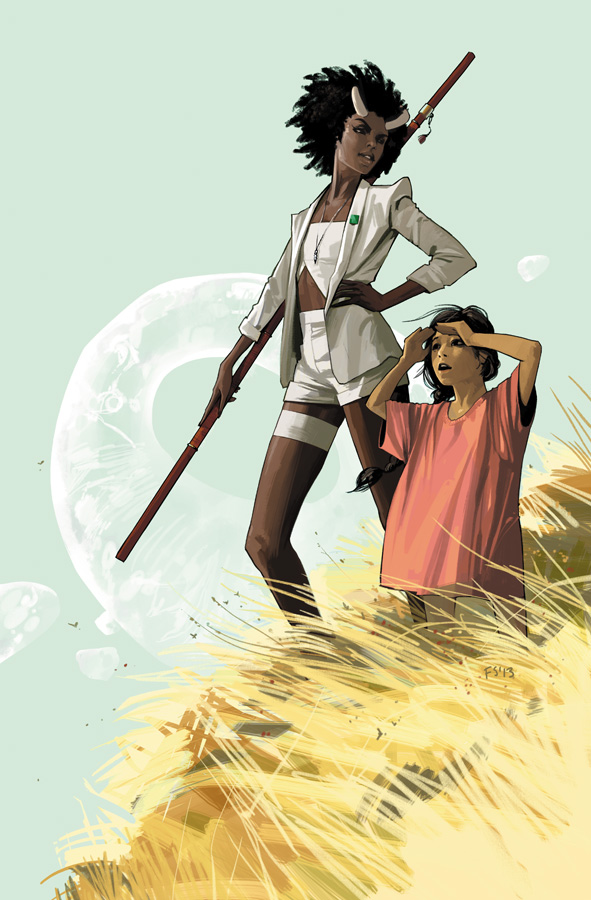
Is Matt Fraction the best writer in comics right now? Possibly. He’s versatile enough to write strong “standard corporate” comics (Fantastic Four), bright enough to tweak them into something fresh (Hawkeye, FF), all the while writing challenging, groundbreaking stuff like Sex Criminals. This is one of the few comics I read this year where at several points I had to stop, pause, think, and re-read.
And if you don’t know by now what I picked for #1, you can probably guess….
1. Saga (Image)
Do I really need to explain why? This is consistently the most inventive, randomly crazy, and thought-provoking book on the market—right down to exposing Apple’s homophobia when the company refused to carry an issue on its digital comics platform.
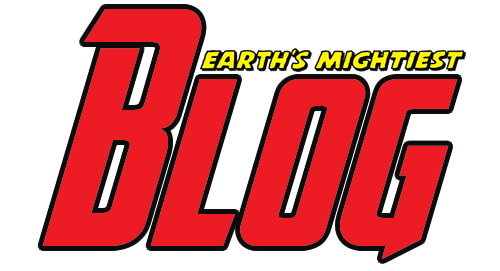
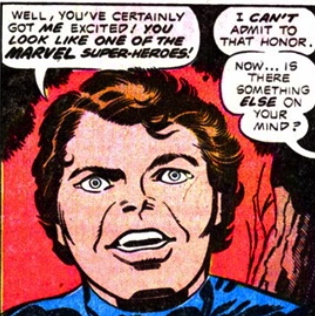
Quote,”notable about this year’s list: No Walking Dead. That comic has made my
list every year since I started comic blogging, but this year Robert
Kirkman’s limited ability to write dialog became too distracting, and
too obvious, in a drawn-out storyline that involved way, way, WAY too
much cursing. It was lazy writing Maybe it crossed over from artistic to corporate…”
They keep saying that the TV series has “jumped the shark”, but I still watch it regularly.
I think the TV show is still great. The return of the Governor started badly but ended triumphant.